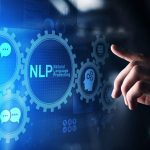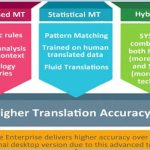Machine translation (MT) is automated translation. It is the process by which computer software is used to translate a text from one natural language (such as English) to another (such as Spanish).
To process any translation, human or automated, the meaning of a text in the original (source) language must be fully restored in the target language, i.e. the translation. While on the surface this seems straightforward, it is far more complex. Translation is not a mere word-for-word substitution. A translator must interpret and analyze all of the elements in the text and know how each word may influence another. This requires extensive expertise in grammar, syntax (sentence structure), semantics (meanings), etc., in the source and target languages, as well as familiarity with each local region.
Human and machine translation each have their share of challenges. For example, no two individual translators can produce identical translations of the same text in the same language pair, and it may take several rounds of revisions to meet customer satisfaction. But the greater challenge lies in how machine translation can produce publishable quality translations.
Rule-Based Machine Translation Technology
Rule-based machine translation relies on countless built-in linguistic rules and millions of bilingual dictionaries for each language pair.
The software parses text and creates a transitional representation from which the text in the target language is generated. This process requires extensive lexicons with morphological, syntactic, and semantic information, and large sets of rules. The software uses these complex rule sets and then transfers the grammatical structure of the source language into the target language.
Translations are built on gigantic dictionaries and sophisticated linguistic rules. Users can improve the out-of-the-box translation quality by adding their terminology into the translation process. They create user-defined dictionaries which override the system’s default settings.
In most cases, there are two steps: an initial investment that significantly increases the quality at a limited cost, and an ongoing investment to increase quality incrementally. While rule-based MT brings companies to the quality threshold and beyond, the quality improvement process may be long and expensive.
Statistical Machine Translation Technology
Statistical machine translation utilizes statistical translation models whose parameters stem from the analysis of monolingual and bilingual corpora. Building statistical translation models is a quick process, but the technology relies heavily on existing multilingual corpora. A minimum of 2 million words for a specific domain and even more for general language are required. Theoretically it is possible to reach the quality threshold but most companies do not have such large amounts of existing multilingual corpora to build the necessary translation models. Additionally, statistical machine translation is CPU intensive and requires an extensive hardware configuration to run translation models for average performance levels.



Comments are closed